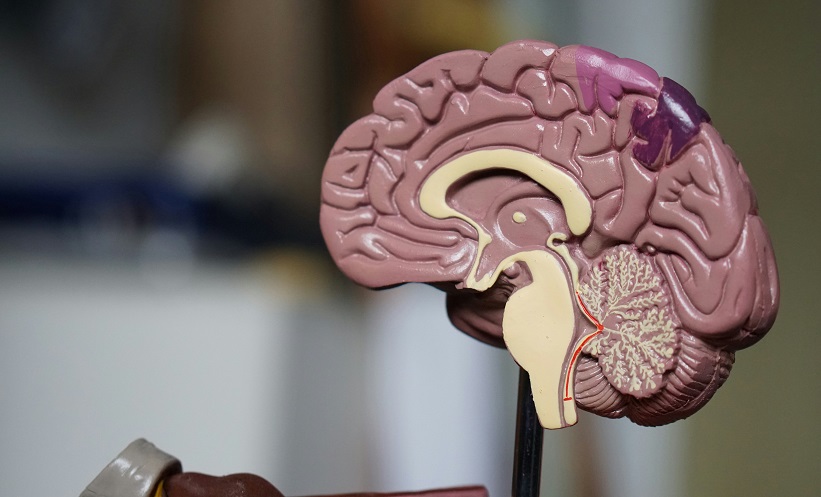Held in the beautiful and culturally rich city of Berlin, Germany, this year’s European Association for the Study of Diabetes (EASD) congress was set to be a ground-breaking success. With an exceptional scientific programme boasting numerous oral and poster presentations, a vast array of individual lectures by distinguished scientists and Prize Lecturers, poster sessions, and 1,218 abstracts chosen for presentation, there really was something for professionals with all levels of diabetes knowledge over the 5-day event.
The EASD Annual Meeting is the largest international annual congress of diabetes research, positioning the event at the forefront of the field. In line with the EASD’s mission to promote excellence in diabetes care through research and education, EASD encourages co-operation and collaboration between industry moguls and research institutions by conducting and funding ground-breaking diabetes research. Offering the perfect platform to present results, EASD welcomed thousands of attendees to its 54th Congress from across the globe to share and build upon their own scientific and medical knowledge.
Following the society’s mission to promote diabetes care through education, EASD 2018 saw the launch of the society’s new e-Learning programme, which will further expand and develop its postgraduate education activities. The new learning environment will allow students to direct their own learning and takes into consideration demands from current students for active learning, assessments, and feedback. The first three modules of the e-Learning programme were released during the EASD congress and were followed by live demonstrations, giving the audience a chance to test the e-Learning platform and provide their initial feedback.
In the Langerhans hall, Prof Juleen R. Zierath, EASD President, took to the stage to welcome all attendees during the opening ceremony. Prof Zierath swiftly passed the stage to Prof Joachim Spranger, the Chairman of the Local Organising Committee for EASD 2018. Prof Spranger began by highlighting the fantastic and rapid changes in diabetes care over recent years and reflected on the developments in novel technology, including continuous glucose measurements and nearly closed loop insulin pump systems for Type 1 diabetes mellitus. He also remarked on novel treatment approaches, such as SGLT2 inhibitors, and their impact on Type 2 diabetes mellitus patients, commenting on how these approaches have translated into fewer complications and lower mortality rates.
Prof Spranger went on to emphasise his passion for and his belief that focussing on clinically relevant and patient-orientated outcomes should be standard practice before novel treatments can be considered. This notion was considered novel in recent years but will act as a cornerstone for future research to enable the most effective and worthwhile treatments to reach patients.
As well as looking to the future of diabetes research, EASD 2018 also evaluated current treatments, technologies, and care, along with outstanding scientific and medical research. A selection of the most revolutionary diabetes news presented at EASD is compiled in this Congress Review and offers all those who attended the event a refresher; for those who were unable to make it to Berlin, now is your opportunity to experience the hive of information released during the congress.
Looking to next year, EASD will grace the stage of Fira de Barcelona, Barcelona, Spain, from 17th–20th September 2019 for the society’s 55th Annual Meeting. Here at EMJ, we are already eagerly preparing for this much-anticipated event and cannot wait to bring you our independent review of EASD 2019.

Updated Guidelines for the Management of Hyperglycaemia
IF you were wondering how best to manage hyperglycaemia in patients with Type 2 diabetes mellitus (T2DM), the recent EASD congress has provided answers, as reported in a EASD press release dated 5th October 2018. With the field of diabetes constantly evolving, there have been a number of trials conducted that have expanded the current evidence base in regard to the management of hyperglycaemia in patients with T2DM. Therefore, the EASD and the American Diabetes Association (ADA) conducted a thorough review of the most recent evidence; this review led to an update to the 2015 guidance. The new 2018 EASD–ADA consensus guidelines on how to manage hyperglycaemia in patients with T2DM were published during the EASD congress.
Some of the details contained in these new recommendations can be seen below:
- All individuals with T2DM should be encouraged to increase their physical activity, since an increase in physical activity has been found to improve glycaemic control. Furthermore, any diabetic patients who are overweight or obese should be informed of the health benefits attributable to weight loss. Following this, these patients should also be encouraged to initiate an intensive lifestyle management programme.
- The delivery of patient-centric care should be prioritised by healthcare providers and healthcare systems.
- The recommended first-line therapy for the vast majority of patients with T2DM is metformin. If selecting a medication to add to metformin therapy, there are a number of factors that should be considered, including patient preference and the presence of comorbidities, such as heart failure, kidney disease, and cardiovascular disease.
- A specific priority when determining the choice of glucose-lowering medication should be how to maximise patient medication adherence.
While these guidelines now represent the most up-to-date recommendations for managing hyperglycaemia in patients with T2DM, there are still outstanding research questions, such as what the most efficacious combination of glucose-lowering therapies is. The EASD–ADA panel concluded: “Patient-centred decision-making and support and consistent efforts to improve diet and exercise remain the foundation of all glycaemic management. Initial use of metformin followed by addition of glucose-lowering medications based on patient comorbidities and concerns is recommended as we await answers to the many questions that remain.”
Diabetes Diagnosis Up To 20 Years Before Disease Onset
TYPE 2 DIABETES MELLITUS (T2DM) is hallmarked by a number of diagnostic markers, including elevated fasting glucose levels, higher BMI, and impaired insulin sensitivity. A recent Japanese study, reported in a EADV press release dated 5th October 2018, investigated these biomarkers and suggested that T2DM could be predicted 10 years before diagnosis was confirmed.
In total, 27,392 non-diabetic individuals were included in the study that sought to monitor their blood glucose, BMI, and insulin sensitivity until the diagnosis of T2DM or prediabetes, or until 2016, depending on which endpoint came first. Over the course of the study, 1,061 new cases of diabetes were confirmed. Analysing the key biomarkers, the research team identified that all three were elevated over 10 years before T2DM diagnosis was confirmed. For example, the average fasting glucose levels 10 years before diagnosis for patients who developed T2DM was 101.5 mg/dL, compared with 94.5 mg/dL for those who did not develop T2DM. By 1 year before diagnosis, patients who developed T2DM had a mean fasting glucose of 110.0 mg/dL, while those who did not develop T2DM had a mean of 94.0 mg/dL.
The results of this observational trial are limited by a number of variables, but the data remain of great importance. With the number of patients diagnosed with T2DM continuing to increase each year, early identification of those at greatest risk would allow for the implementation of intervention strategies before the disease takes hold. Study lead Dr Hiroyuki Sagesaka, Aizawa Hospital, Matsumoto, Japan, concluded: “As the vast majority of people with T2DM go through the stage of prediabetes, our findings suggest that elevated metabolic markers for diabetes are detectable >20 years before its diagnosis.”

Lorcaserin Reduces the Risk of Developing Diabetes and Helps Control Blood Sugar
LORCASERIN, a known appetite suppressant, is effective at reducing the risk of developing diabetes and can aid high blood sugar remission in obese and overweight patients at high risk of developing atherosclerotic vascular disease, according to a EASD press release dated 4th October 2018.
The American study included 12,000 patients followed-up for 3.3 years and randomised to receive either lorcaserin (10 mg twice daily) or placebo. The authors of the study concluded: “Lorcaserin is effective for weight loss, and in contrast to many other obesity medications to date, has proven safety for major adverse cardiovascular events, including CV death, myocardial infarction, or stroke.”
The CAMELLIA-TIMI 61 study results showed that after 1 year, a net weight loss of 2.6 kg, 2.8 kg, and 3.3 kg was achieved by patients who received lorcaserin with baseline diabetes (n=6,816, 57%), prediabetes (n=3,991, 33%), and normoglycaemia (n=1,193, 10%), respectively. The results also showed that of the patients who had prediabetes at baseline and who received lorcaserin, 8.5% had a risk of incident diabetes, compared to 10.3% of those who were not treated with lorcaserin.
Lorcaserin was also found to increase the rate of achieving normoglycaemia in patients with prediabetes and significantly increased the rate of remission of hyperglycaemia in patients with diabetes by 21%. In addition, lorcaserin reduced the risk of microvascular events by 21% in patients with diabetes and reduced HbA1c levels by 0.3% compared with placebo at 1 year from a mean baseline of 7.0%.
The authors of the study commented on the importance of the CAMELLIA-TIMI 61 results: “Now, in addition to proven persistent weight loss efficacy with extended duration use, we report that when added to lifestyle interventions, lorcaserin significantly reduced the incidence of diabetes, tended to increase achievement of normoglycaemia in patients with prediabetes, increased the rate of remission of hyperglycaemia in patients with diabetes, and reduced the risk of diabetic microvascular complications. Taken together, these findings reinforce the notion that modest, durable weight loss can improve cardiometabolic health and supports the role of lorcaserin as an adjunctive therapy in chronic weight management and metabolic health.”
Common Misdiagnosis of Diabetes Patients Over 30 Years of Age
PATIENTS diagnosed with Type 2 diabetes mellitus (T2DM) after the age of 30 years are often misdiagnosed and, in fact, have Type 1 diabetes mellitus (T1DM), suggests a new study by researchers at the University of Exeter, Exeter, UK, and reported in a EASD press release dated 5th October 2018.
The study analysed 583 patients with insulin-treated diabetes who had been diagnosed after the age of 30 years, comparing their disease characteristics to those of participants who still produced some insulin and 220 subjects with severe insulin deficiency who had been diagnosed before 30 years of age. The results showed that 21% of the insulin-treated diabetes cohort diagnosed after 30 years had severe insulin deficiency and, thus, T1DM. Of this group, 39% did not receive insulin when first diagnosed and 46% had self-reported T2DM.
Of those patients who became dependent on insulin within 3 years, 44% developed a severe insulin deficiency, and this group was found to have similar clinical, biochemical, and genetic characteristics to those diagnosed with the condition before the age of 30 years. On the other hand, the group that retained some insulin production had lower T1DM genetic risk scores, antibody positivity, and higher BMI. The average age of patients for whom insulin treatment was delayed was higher (48 years) compared to those treated with insulin immediately (41 years); additionally, their rate of self-reporting T1DM was much lower (50% versus 96%). Additionally, oral hyperglycaemic drugs were more commonly prescribed for the delayed diagnosis group (29% versus 7%).
These data revealed the clinical similarities between T1DM diagnosed before and after 30 years of age, thus highlighting the importance of correctly diagnosing the condition as early as possible. “Clinicians should be aware that the majority of patients needing insulin within 3 years of diagnosis will have T1DM, even if they were initially thought to have T2DM and did not need insulin at diagnosis,” highlighted Dr Nick Thomas, University of Exeter.

Low-Calorie Sweeteners Negatively Impact the Gut Microbiome
CONSUMING low-calorie sweeteners (LCS) can greatly impact the gut bacteria, suggests new research from the University of Adelaide and Flinders University, Adelaide, Australia and reported in a EASD press release dated 5th October 2018. Previous studies have noted the increased risk of developing Type 2 diabetes mellitus (T2DM) following a high intake of drinks containing LCS, and the authors themselves had recently demonstrated that 2 weeks of consuming a diet augmented with LCS was enough to induce a clinically relevant increase in the body’s response to glucose; however, the extent to which gut dysbiosis played a role in this process had yet to be identified.
To explore this topic, the study enrolled 29 non-diabetic subjects with an average age of 30 years and an average BMI of 24 kg/m2. These subjects were then randomised to placebo (n=15) or an LCS combination (92 mg sucrose and 52 mg acesulfame-K) (n=14) that mirrored the consumption of 1.5 L of diet beverage per day, delivered in the form of capsules taken 3 times per day for 2 weeks.
Stool samples were taken from all subjects before and after the treatment regimen, with results showing a greater variation of microbes present in the LCS-treated group, including a decrease in the good-health-associated bacterium Eubacterium cylindroides. Eleven forms of opportunistic gut bacteria were seen to increase, while the number of beneficial bacteria that aid the fermentation of food decreased. “The observed decrease in fermentative bacteria populations and changes in the pathways used by bacteria to harvest energy predicted a deterioration in the body’s ability to regulate glucose,” explained the authors.
This change to intestinal flora can have a direct impact on the metabolism of sucrose and glucose; for example, a decrease in Butyrivibrio bacteria was linked to a drop in glucagon-like peptide 1, a hormone that contributes to the control of blood sugar levels. These findings highlight the impact of LCS consumption for metabolism, as well as shedding light on the complex interplay of the gut microbiome and the body’s metabolism. “Our findings support the concept that such sweeteners worsen blood sugar control in healthy subjects by disrupting the regulation of glucose uptake and disposal, as well as from changes in the balance of gut bacteria,” concluded the authors.
Results of the CARMELINA® Trial Presented
THE SAFETY of linagliptin in regard to cardiovascular and kidney effects has been shown to be approximately equivalent to placebo. More specifically, the results of the CARMELINA® clinical trial, which was designed to examine the effects of linagliptin on cardiovascular and kidney safety in adult patients with Type 2 diabetes mellitus (T2DM) who had a high risk of developing heart and/or kidney disease, were presented at the EASD Annual Meeting 2018 and reported in a EASD press release dated 4th October 2018.
The trial’s primary endpoint was the time to first occurrence of the three-point major adverse cardiovascular event (3P-MACE); the three points are cardiovascular death, non-fatal stroke, and non-fatal myocardial infarction. The key secondary endpoint was a composite: time to first occurrence of death due to kidney disease, sustained end-stage kidney disease, or a sustained decrease in estimated glomerular filtration rate by ≥40% from baseline compared with placebo.
The trial included 6,979 patients with T2DM who were split into two groups. While both groups received standard care, one group was additionally treated with a once daily dose of linagliptin 5 mg and the other group received placebo. It was found that the cardiovascular events that composed the primary endpoint occurred in 12.4% of the linagliptin group and 12.1% in the placebo group. Furthermore, the key secondary endpoint referring to kidney safety was met in 9.4% of the linagliptin group and 8.8% in the placebo group. Speaking about the results of the trial, Prof Bernard Zinman, Department of Medicine, University of Toronto, Toronto, Canada, one of the study’s authors, noted: “CARMELINA adds important new evidence for T2DM patients at high risk of heart and/or kidney disease, a population that has been under-represented in other cardiovascular outcome trials, but whom we see in our daily practice. The trial confirmed that linagliptin can be used with confidence in this patient population.”

Two Giant Leaps Forward for Type 2 Diabetes Mellitus Management
EXCITEMENT is widespread in response to the news of multiple new drugs progressing through clinical trials and exhibiting very promising results implicating Type 2 diabetes mellitus (T2DM) care and management, adding to the armoury doctors have at their disposal to combat the disease.
“Complicated treatment regimens that require multiple injections at different times of day can be difficult for patients to adhere to, potentially leading to poor blood sugar control,” stated lead investigator Dr Athena Philis-Tsimikas, Scripps Whittier Diabetes Institute, La Jolla, California, USA, when discussing the current management of T2DM. However, the results of a new trial, presented at the EASD Annual Meeting on 2nd October 2018, investigating the efficacy of a once-daily T2DM drug, Ryzodeg® (Novo Nordisk, Bagsværd, Denmark), could revolutionise disease management.
In the 38-week, international, open-label, randomised, treat-to-target Step by Step trial, the safety and efficacy of Ryzodeg was compared with the current standard therapeutic agent, insulin glargine U100 plus insulin aspart, in 532 patients from seven different countries. Ryzodeg is a combination of insulin degludec and insulin aspart (IDegAsp).
At the 26-week timepoint, patients in the Ryzodeg arm had received 50% fewer injections and significantly fewer daily insulin units (12%). Furthermore, beyond the 26-week timepoint, Ryzodeg demonstrated a statistically significant 45% lower rate of nocturnal severe or blood glucose-confirmed symptomatic hypoglycaemic episodes compared with insulin glargine U100 plus insulin aspart.

“These trial results show that once-daily IDegAsp [Ryzodeg] can offer people with T2DM a much simpler option with fewer injections compared with insulin glargine U100 plus insulin aspart, to achieve effective blood sugar control,” concluded Dr Philis-Tsimikas. The results of the trial offer an exciting new avenue for minimally invasive T2DM management; however, further testing of Ryzodeg is warranted before it replaces current therapeutic standards.
Additionally, the results of a Phase IIb study investigating the effects of a dual glucose-dependent insulinotropic polypeptide (GIP) and glucagon-like peptide (GLP)-1 receptor agonist (RA) on blood glucose and weight in T2DM patients were reported at the EASD Annual Meeting on 4th October 2018, showing great promise for future use in T2DM patients.
Aiming to build on the previous success obtained through the use of GLP-1 RA, the 26-week, randomised, placebo-controlled Phase IIb study analysed the effects of four once-weekly doses (1, 5, 10, and 15 mg) of the dual GIP/GLP-1 RA compared with the effects of an active GLP-1 RA, dulaglutide (once-weekly 1.5 mg), and placebo in 300 T2DM patients.
The trial gave rise to a clinically significant decrease in the Hb1Ac levels of patients in the GIP/GLP-1 RA arm, ranging from a 1.6% decrease in those receiving a 5 mg dose to a 2.4% reduction seen in the 15 mg dose group. In comparison, patients administered dulaglutide exhibited a 1.1% reduction in Hb1Ac levels, and in placebo patients a 0.1% reduction was noted. Furthermore, a beneficial effect of GIP/GLP-1 RA on patient weight loss was noted. Average weight loss in the GIP/GLP-1 RA arm ranged from 4.8 kg (5 mg group) to 11.3 kg (15 mg group), compared with 2.7 kg in the dulaglutide arm and 0.4 kg in the placebo group.
The safety profile of GIP/GLP-1 RA was similar to the currently available GLP-1 RA. The most commonly reported adverse effects were gastrointestinal and were dose-dependent; for example, 20% of the 5 mg patients reported nausea, while it was reported in 40% of the 15 mg patients.
These results must be interpreted with caution, considering the large disparity in weekly drug doses between those receiving dulaglutide and GIP/GLP-1 RA. However, with future larger Phase III studies planned in 2019, the results of this novel GIP/GLP-1 RA could mark another revolutionary step in diabetes management. Dr Juan Frias, National Research Institute, Los Angeles, California, USA stated: “These Phase IIb clinical trial results for GIP/GLP-1 RA are unprecedented, and the impressive blood glucose and weight reductions seen may lead to a new treatment option for people with T2DM.”
In this age of new and revolutionary medicines, the advancements made with the degludec analogue, Ryzodeg, and the novel GIP/GLP-1 RA offer new strategies for T2DM management, tackling the disease on multiple fronts.








